
At the Macquarie Lake Variety Playground, the water zone particularly interested me. It was not an especially big area. Yet, the attention to detail in the design really appealed to my love of places where different elements and materials cross the boundaries of the zones or designated areas.
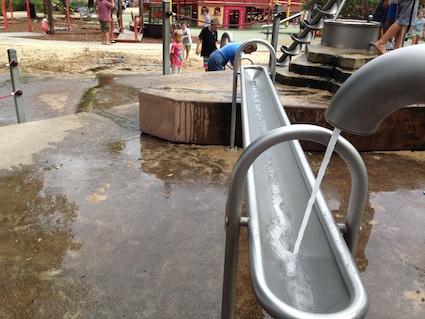
In the photo about you can see that water can be pumped into the trough where it runs down and out of the hole the other end. Then the fun begins.
Rather than have another trough to catch the water, it spills out on to the sandstone rock. A gentle channel has been carved into the rock on each of the steps. So the water has a place to go but it can be easily blocked, or the flow changed. It is also part of the main steps connecting the different levels within the zone.

Just to one side of the main feature is a series of cause-and-effect fountains. The buttons are not on the pipes. You have to explore to find out which button works which fountain.

One of the fountains has a small spout. The water falls onto these grooves carved into the rock. So the water trickles down to the next levels in more of a river delta-like way.
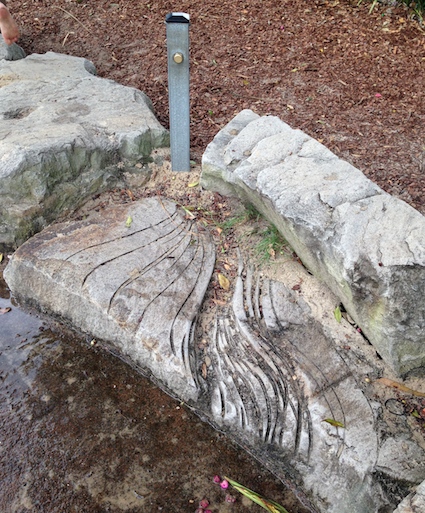
The surfaces within the water play area all gently slope one way into a large sandpit. So there is this intermediate area where the water meets the sand. It means children can easily mould and create with wet sand.
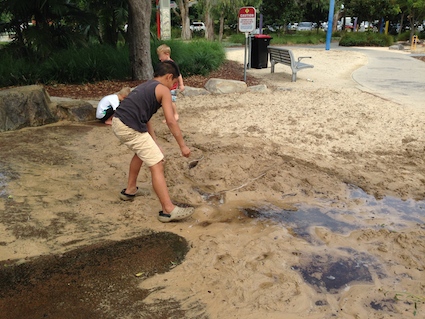
Pools, streams, channels and cavities can be created. But where the water finally disappears to I’m not exactly sure.
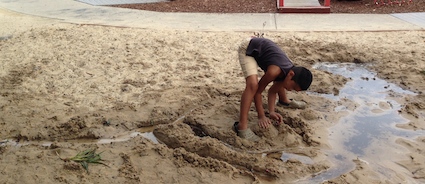
The wide open space and asphalt also add another dimension. So water meets asphalt and sand after getting there in many different ways.

Then there is the fun of feeding more water into the system. This can happen at the top but the archimedes screw also provides an option which involves moving water upstream.
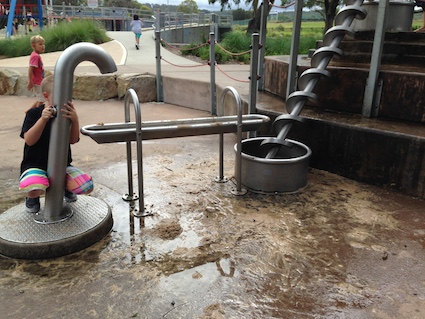
It is a clever, beautiful and eternally absorbing place. Or so it seemed to the children playing there! Whilst this sort of set up is beyond the financial means of a school or ELC setting, it’s worth looking at these places for ideas such as:
- Do we allow opportunities for sand and water to be jointly explored? Can we visit a beach to enable this to happen if it’s not possible to facilitate in our own outdoor spaces?
- The water channel spilled onto stone, not another water channel and steps. Can we offer alternatives – for example what collection vessels do our children have options to use and furthermore, do they know about these and use them in their water play?
- Archimedes screws come in many forms and even if this is not within our scope, are there portable examples we could introduce?
- What’s our water channelling systems like? Do we offer a range of guttering as loose parts, sourced as scrap? Or have we several fixed lengths of guttering attached to a wall that potentially limits the play opportunities?
This blog post is an updated version of one that was previously published in March 2015.



















